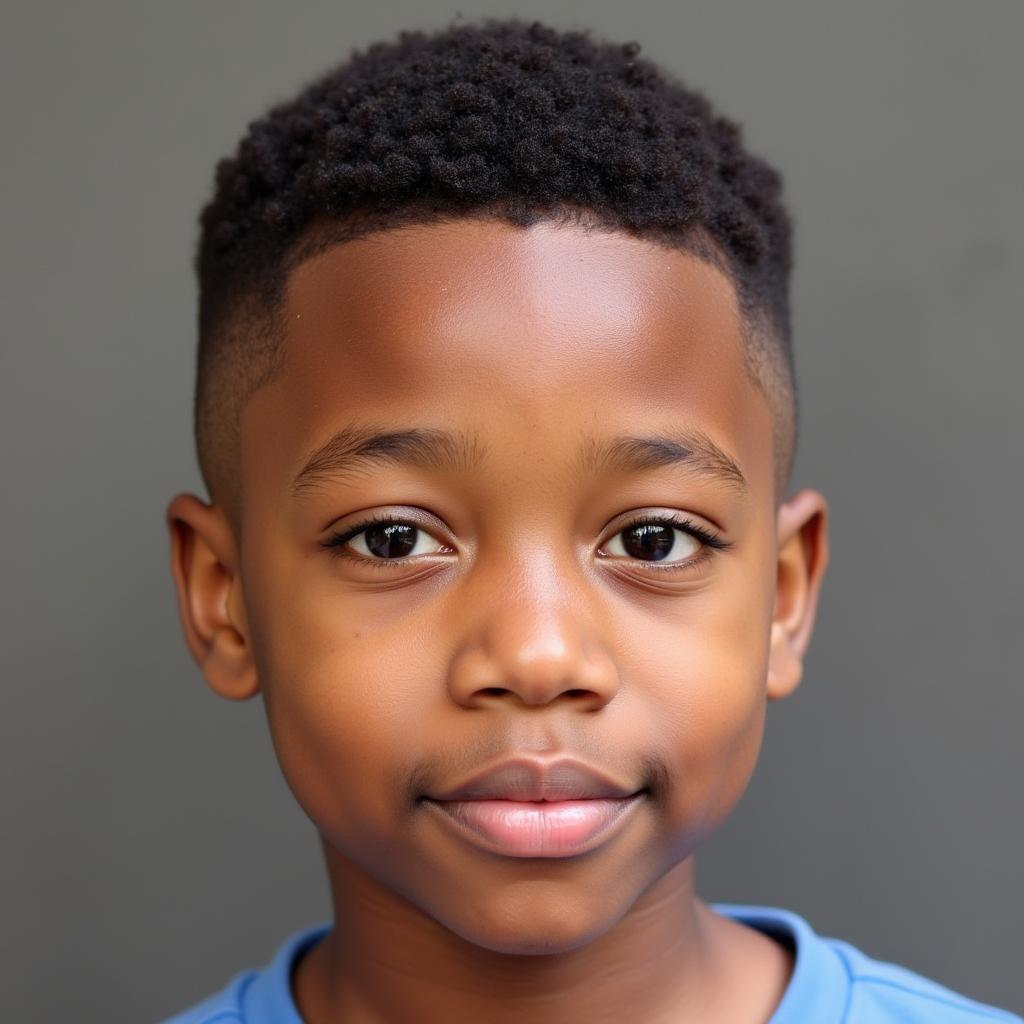African American Boy Haircuts: A Look Back at 2015 and Beyond
African American boy haircuts in 2015 showcased a blend of classic styles and emerging trends. From fades and tapers to twists and braids, young boys embraced a variety of looks that reflected both personal style and cultural influences. This article explores the popular haircuts of that era, examining their origins and evolution while also considering contemporary trends.
The Rise of the Fade and Taper in 2015
The fade and taper haircuts were undoubtedly prominent in 2015. These styles, characterized by gradually shorter hair on the sides and back, offered a clean and sharp look. The fade, with its almost skin-close transition, provided a more dramatic contrast, while the taper offered a subtler gradation. These versatile cuts allowed for various styling options on top, from short and textured crops to longer, more sculpted designs. Both styles were popular for their easy maintenance and adaptability to different face shapes and hair textures.
Variations of Fades and Tapers for Young Boys
Several variations of fades and tapers catered to individual preferences. The low fade, starting just above the ear, provided a subtle transition. The mid fade, starting slightly higher, offered a more noticeable contrast. The high fade, originating near the temple, created a bold statement. Similarly, tapers varied in their starting point and the length of the transition.
 Low Fade Haircut for African American Boy in 2015
Low Fade Haircut for African American Boy in 2015
The popularity of these styles stemmed from their adaptability, allowing for personalization through different lengths and styling choices on top.
Embracing Texture: Twists and Braids
Beyond fades and tapers, twists and braids remained a cornerstone of African American hair culture. These styles, rooted in tradition and practicality, continued to thrive in 2015, offering boys a protective and stylish way to manage their hair. Twists, created by intertwining two strands of hair, provided a versatile look that could be worn short or long. Braids, incorporating three or more strands, offered intricate designs and added visual interest.
The Significance of Protective Styles
Twists and braids served as protective styles, minimizing damage from environmental factors and promoting healthy hair growth. They also offered a unique way to express individuality and celebrate cultural heritage. From simple cornrows to more elaborate braided patterns, these styles provided endless possibilities for creativity and self-expression.
“Braids and twists are more than just hairstyles; they represent a connection to heritage and a celebration of identity,” says Dr. Anika Johnson, a cultural anthropologist specializing in African American traditions.
Modern Takes on Classic Styles
While 2015 had its signature looks, the evolution of hairstyles continues. Today, we see modern interpretations of these classic cuts. The fade and taper remain prevalent, often combined with designs etched into the shaved sections or styled with textured curls and waves on top. Braids and twists have also evolved, incorporating new patterns and techniques, reflecting the ongoing dynamism of African American hair culture.
The Influence of Social Media and Pop Culture
Social media and pop culture play a significant role in shaping hair trends. Celebrities and influencers often showcase new styles, inspiring young boys to experiment with their own looks. This exchange of ideas and inspiration contributes to the ever-evolving landscape of African American boy haircuts.
“Hair is a powerful form of self-expression,” notes celebrity barber Kwame Osei. “It’s a way for young boys to explore their identity and connect with their community.”
Conclusion: A Legacy of Style and Self-Expression
African American boy haircuts in 2015, featuring fades, tapers, twists, and braids, laid the groundwork for many of the styles we see today. These haircuts, rooted in both practicality and cultural significance, continue to evolve, offering boys a canvas for self-expression and a connection to their heritage. From classic cuts to modern interpretations, African American boy haircuts remain a vibrant expression of identity and style.
FAQ
-
What were the most popular African American boy haircuts in 2015?
Fades, tapers, twists, and braids were among the most popular styles. -
What is the difference between a fade and a taper?
A fade features a shorter, almost skin-close transition, while a taper offers a more gradual change in length. -
Why are twists and braids considered protective styles?
They minimize hair damage and promote healthy growth. -
How do current trends reflect the styles of 2015?
Modern haircuts often incorporate updated versions of fades, tapers, twists, and braids. -
Where can I find inspiration for African American boy haircuts?
Social media, pop culture, and barbershops are great sources of inspiration. -
What is the cultural significance of African American hairstyles?
They represent a connection to heritage, identity, and self-expression. -
How can I choose the best haircut for my son?
Consider his hair texture, face shape, and personal style preferences.
Need more assistance? Contact us: Phone: +255768904061, Email: kaka.mag@gmail.com or visit us at Mbarali DC Mawindi, Kangaga, Tanzania. We have a 24/7 customer service team.

